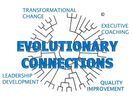|
When we consider the current challenges and approaches in Health and Care the reasons to “Take it Teal” become self-evident. The challenges are big and complex and making what we already do more efficient will not help. Indeed, there is evidence that some of these previous initiatives have been counterproductive and have disengaged staff and left citizens dissatisfied with the service they received. The programme to develop Integrated Care Organisations is already underway. Based on subsidiarity, there is no central blueprint, local health and care systems are designing what can improve health in their own neighbourhoods and across their own systems. Moving towards self-organising systems and self-managed teams requires a similar approach. There is learning and experience that can be shared but each system and organisation will need to make it their own. It makes sense to align subsidiarity in the systems and neighbourhoods with subsidiarity in the services that support these neighbourhoods to give them the agility to meet local needs. Health care used to provide treatment for episodes of illness. Its task was to fix the problem and discharge people back to their usual lives. It now needs to deliver long-term support to growing numbers of older people and those living with long-term conditions. This means enabling self-care and self-management of long-term conditions. To be successful health staff need to focus on what’s important to the citizen they are supporting and provide person-centred care. The educational, coaching and developmental techniques used to support citizens to step up and take control of their health and wellbeing are the same approaches that can support staff to take control and manage their own work. Working in this way restores the autonomy removed from workers in recent times and gives them back the ability to make a difference. The improved job satisfaction and customer satisfaction which results improves recruitment and retention rates, another key issue in today’s health sector. Our current approach to health, treating our illnesses and conditions, is not sustainable. We need to work upstream, promote wellness and prevent illness. Health is social, there is a physical element to this and a great contribution that medicine can make but we need a broader appreciation of what makes us healthy and feel happy and well. We recognise that our neighbourhoods and communities play a vital role and we are developing towards being able to value them and work in ways that respect this. In organisations we know that the culture in which we work has a dramatic impact on our performance and our staff wellbeing. Creating organisations and working in ways that maximise the health and wellbeing of our staff and respect and value our communities is a moral imperative. These new ways of working enable us to do this. In health care we are now more accepting of the emotional and spiritual aspects of health, we can prove the benefits of compassion and more holistic approaches to care with patient outcome data. It therefore makes sense that we should view wellbeing and wholeness for our staff in the same way. Creating workplaces where we welcome the whole person allows us to address issues of equality and diversity in context, not as a separate issue. It allows us to value and harness all the talents and passions of our staff to their work, not just the slither of person that might be reflected in a job description. It enables us to model health promoting approaches for other organisations in our systems and treat our staff in the way we hope they will treat the citizens they support and care for. Safety, quality and continuous improvement have long been a focus of healthcare with varied success. Self-organising approaches release the energy of staff and teams committed to doing their best for the people they care for. These staff are best placed to spot the dangers, experience the frustrations and identify the improvements that will deliver the biggest advantages for the people they support. Continuous improvement is an integral part of the self-management team approach. Adopting self-organising approaches in teams and supporting them to pursue their own improvement agenda rigorously will produce the safety and quality we aspire to. Adopting this approach allows organisations to align their operating process with their approach to delivering to their purpose and providing care and support to improve the health of their communities. Whether we look at NHS values, the 6 Cs or the 7 principles of care, this way of working enables us to live them. If we are serious about preserving these values and principles and creating a way for them to not only to survive but thrive into the next 70 years, this is the way forward. The 7 Most Common Myths and Misunderstandings about Self-organising in Health and Social Care15/7/2018
1. Self-management means no managementIn traditional organisations the tasks of decision making, providing expert clinical advice, allocating work and resources and monitoring and assuring the work being done are often all part of the managers role. In a self-organising team these tasks still exist but are done in a different way. Teams that work successfully adopt processes to help them manage themselves and hold each other accountable. The process of peers holding each other to account about their practices and efficiency can be much more powerful and effective than traditional management methods. Common techniques teams use to help them do this are tactical meetings, integrated decision making, regular consideration of statistics and stories that enable the team to know where they are at and plans to continuously improve.
2. There is no hierarchy There is no power hierarchy, no-one is given power over their team mate. Natural hierarchies do arise and are encouraged by building an environment that welcomes the whole person to work. Someone who is considered efficient and fair is an obvious choice to fill the role of organising the rota or can be the “expert” that supports others who want to develop the skills and aptitudes for this task. Similarly, a colleague who is an expert in a clinical aspect of work will naturally take a lead in discussions and developing practice in this area. She may even find she is asked for advice and input by other teams. 3. Teams are left alone to get in with it Teams are supported to self-organise by coaches or facilitators. Coaches and facilitators have no power in the team. Their role is to provide advice, information and support the team to make decisions and resolve issues. Depending on the type of team or organisation, some teams are also supported by business managers who handle contracts on their behalf or carry out other specialist functions. 4. Teams act independently and do as they please Teams taking decisions often use integrated decision making and the advice process. This ensures that they take advice from any experts and talk to anyone who may be impacted on by their decisions. The decision is the teams to make but they will be taking the decision having integrated any views and objections they encountered. Teams may also link with other teams to consider issues they have in common. For example, teams may send representatives to a meeting that they have empowered to make decisions about staff training. The meeting would be accountable for planning the programme and spending the budget on behalf of all the teams. Systems and processes based on holocracy or sociocracy are often used to connect teams and their decision making across larger organisations. 5. There is no leadership There is distributed leadership. Many people taking different roles will be required to take decisions as defined by their role, instigate action, resolve problems and monitor quality and outcomes. Especially as an organisation establishes itself or makes the move to become self-organising leadership is key. Leaders need to create the spaces for the self-organising behavior they wish to encourage and keep inviting people to step up and take part. They need to have courage and hold a steady course as the organisation encounters its first problems and setbacks. They need to articulate the purpose and values frequently and clearly so that teams can make decisions and check they are in alignment. Leaders need to create the environment in which the teams can flourish. They need to collect and provide information to teams to make great decisions and to external regulators and stakeholders to assure them that the services provided are safe, effective and compassionate. 6. Only highly skilled senior professional staff can work in this way Anyone in a health or care organisation can work in this way. We already have many of the skills and self-organise in non-work situations all the time. There are examples of the lowest paid, lowest grade staff working successfully together in self-organising teams. There are also examples of the highest paid, highly trained and educated staff who have not been able to work successfully in this environment. The approach is about working as part of a team. Being able to give and receive feedback, being accountable, being supportive, being humble, being proactive in identifying and solving problems and being trusting and trustworthy are all attributes of successful self-organising team colleagues. 7. There is a blueprint about how to do this The teams and organisations working in this way are very generous. Both inside and outside health and social care they will share their experiences and knowledge with you. There are lots of shoulders to stand on to see the way forward for your team or organisation. This way of working is so successful because it enables every individual to contribute their best to their team. Similarly, it enables every team and organisation to offer what is most useful to the people and communities it supports. As a result, each organisation will be different. Indeed, each team made up of different team members and serving a different community in an organisation will be different. The thing that unifies them and serves to measure their success is that they can fulfill the organisations purpose for the people and communities they serve. There is no blueprint but there is a lot of knowledge and experience that you can use to plan your own journey. Jane Pightling www.evolutonaryconnections.co.uk By Anna Betz and Jane Pightling for Enlivening Edge Magazine Part 1
http://www.enliveningedge.org/views/self-management-save-health-and-care-systems-integral-european-conference/
The role of transformative listening in transforming self and organisations
When both staff and patients have a lot of re-learning to do, we need to develop more advanced skills to listen more deeply to each other, to our own and each others’ values and motivations. We need to learn what it takes to use knowledge wisely to co-create health with individuals and communities. Liberating creative potential encourages the emergence of new insights and practices which is evidenced by the newly formed Wellbeing Teams in the UK. The healing of our broken health and social care systems will require active support of self-care, facilitation of self-knowledge, and working in a highly relational way. This work of healing is inseparable from the way we organise our larger systems of health and care. Courageous and visionary leaders who really care for the system as a whole, and staff who are ready to live their values by working with patients in a way that is empowering, are starting to come together to co-create more dynamic organisational structures. The art of listening is central to this transformative work. Initiatives such as Making Every Contact Count and Shared Decision Making and Health listen to citizens and support them to feel responsible for their own health, and to make lifestyle choices that will enable them to live the life they aspire to lead. This allows them to discover and keep doing what matters to them. If we want to succeed in co-creating healthy systems and health-generating communities, we need to listen from a broader, less outcome-fixated perspective, and create together the conditions that become a fertile soil for the emergence of innovative ideas and practices. Professionals will need to redefine relationships with citizens, and to recognise that we can add value only if we co-produce a solution that recognises the citizen’s strengths, and focuses on what matters to them. Similarly, our organisations need to redefine relationships with our communities. They need to learn to listen without trying to control outcomes, start giving space to communities, and intervene only when invited to help or requested to do things that the community cannot. In this article Anna discussed this aspect in more detail. Jane lives and works in a community that is encouraging staff and citizens to embrace and participate in this new relationship as partners, spending time and resources listening to communities, and developing creative ways to support and provide what the community requests. This has meant developing learning opportunities and coaching for citizens with long-term conditions, co-facilitated by professionals and people with lived experience. It has involved diverting resources to enable citizens to set up groups and networks that meet their own needs. For example, very small resources were required to start an outdoor activity group for dads and children wanting to improve their fitness or to provide a community meeting space for older people with mental health issues to talk and provide each other with support. The setting up of groups and networks included diverting resources to fund a worker to work with homeless people, resisting pressure from the press and local politicians to “remove the problem quickly”. It meant working on the street, listening and waiting until the people themselves decided the time was right to change. It meant supporting the community to come together to develop town centre initiatives to connect existing resources and co-produce and co-implement a plan, securing new resources to provide accommodation and support people back into housing when they are ready. To change the way we have been conditioned by our political, social and educational system to think about healthcare, organise, and deliver it, clearly requires new ways of understanding, designing, and providing it. How can we discover an approach that is energising, revitalising, and enriching, one that builds on strengths and assets within and amongst individuals and communities? It all begins with the quality of our listening and with allowing ourselves to be challenged and transformed by what we sense, hear, and feel called to do and manifest in our lives. Allowing ourselves to be challenged without behaving defensively is connected to a certain quality of thinking or a mindset that we apply when we approach situations. What if the challenges we meet in our life and work are gifts to help us in discovering what else is possible? How can we learn to relate to our own experiences, to each other and to professionals in a way that is empowering and transformational? Otto Scharmer calls the shift in mindset that enables us to connect with more of our human potential a shift in evolving human consciousness from habitual ego-system to eco-system awareness. An eco-system awareness is focusing not only on one’s own wellbeing but on the wellbeing of the whole which broadens the mindset and helps us to listen with more openness. The authors Anna and Jane, along with Helen Sanderson, work in different roles in the health and care sector in the UK. We look forward to sharing with you at the Integral European Conference in May some of our experiences and practices, and we invite you to co-sense and co-discover with us where this journey could take us all. If you are curious about the part you can play in re-inventing health and social care, why not register for the IEC2018 conference and join our two workshops on Friday 25th May? When you register to join the conference following this link don’t forget to mention that you are interested in the Teal Organizations Track.
Join the conversation and help to discover through deep listening what in Christiane Seuhs-Schoeller’s words our “superpowers” are. According to Ria Baeck “most people don’t know and are not aware of what their unique gift to the world is. It is just inside them, totally normal and easy to access.” She has tried to write it in these words: http://www.collectivepresencing.org/6-2-from-authentic-self-to-souls-calling/ To continue the conversation and engage in action together join us at the conference following this linkand remember to mention that you are interested in the Teal Org Track. Part 2 of this article will be published soon. Anna’s background is in Health and Social Care with training in Herbal Medicine, Socialwork, Mindfulness Practice, Transparent Communication, and Systemic Family Therapy. She practices a pro-active evolutionary approach to Health and Wellbeing and leads on projects in the UK National Health Service using Mindfulness and diet for people suffering from chronic inflammatory diseases like diabetes and dementia. Her passion for building thriving and sustainable communities inspired her to co-found the HealthCommonsHub. She feels at home in places where individual, communal, organisational, and social evolution meet, and where people support each other in becoming whole and feel enlivened. |
AuthorJane Pightling has experience across the public, private and charitable sector. Through her work in the NHS Leadership Academy and her consultancy Evolutionary Connections she developed complex systems leadership capacity, providing training, coaching programmes and establishing networks and communities of practice to sustain learning. She maintains her social work registration and her commitment to person centred and community focused approaches. Jane has a deep interest in the potential offered by new ways of working, designing and building organisations and communities that can best deliver this kind of service. She works with organisations and leaders to develop approaches that design in autonomy, wholeness and purpose. Archives
October 2021
Categories
All
|




 RSS Feed
RSS Feed